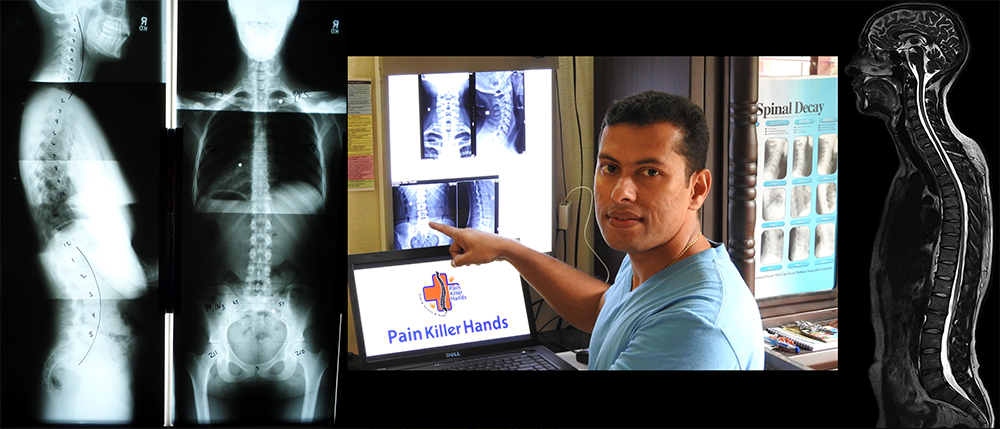
The Patient Needs to Understand The Diagnosis
Diagnosis will typically have three parts: a consultation & case history, physical & neurological examination and X-ray examination may be performed to locate misalignments (the altered position of the vertebra).
One of the most important elements of treatment at PKH is diagnostics. 95% of sickness is caused by slightly misaligned spinal segments, which produce pressure upon the nerves to the organs not functioning properly. To locate the vertebrae out of position producing this pressure is to definitely locate the cause of sickness.
Heretofore all analysis of the spine to locate the misaligned vertebrae causing this nerve pressure was made by external palpation only, with the trained finger touch. This method is entirely satisfactory in most cases, but very often cases present themselves with misaligned vertebrae so complicated, or deceiving to external palpation that an X-ray picture of the spine is necessary to accurately determine the true position of the causative vertebrae.
The X-ray picture is the only absolutely reliable method of securing a correct analysis. We do not treat with the X-rays, but use them only in producing a picture of the spinal segments. With this basis upon which to work we can assure you results. PKH Doctor rely on a variety of diagnostic techniques in order to fully understand what is occurring in the patient’s musculoskeletal system, and how a given treatment intervention could bring about positive results in said patient.
PKH reads X-rays as a treatment procedure to find out if any significant traumatic injury, such as broken bone or a joint dislocation, If any significant disease is suspected, such as cancer or a possible tumor, If any type of joint disease is suspected, such as arthritis causing joint pain, a serious condition present, such as scoliosis, osteoporosis, spinal stenosis, Any suspected spinal instability, If the patient has had long-standing pain that has not responded to or resolved with previous health care treatment…In any of the above cases, an X-ray would likely provide critical information that will direct treatment protocols and/or referral options for the patient.
The X-ray can clearly indicate the need for a type of treatment in a way no other diagnostic scheme can provide. PKH will read the X-ray. We read our own films, not read by a Radiologist. (PKH received intensive education in the interpretation of musculoskeletal radiographs and reading). The X-ray can play a leading role. With this in place, a PKH can often show patients the cause of their pain. From that point, explaining the course of treatment most likely to alleviate the problem is much easier—and with the help of the X-ray the PKH can make the point with a minimum of medical jargon.
PKH may use additional diagnostic tests, such as: An american made device that detects the temperature of the skin in the paraspinal region to identify spinal areas with a significant temperature variance that requires manipulation.
An accurate exam means accurate diagnosis. Accurate diagnosis means accurate treatment. Accurate treatment increases the odds of a good prognosis.
